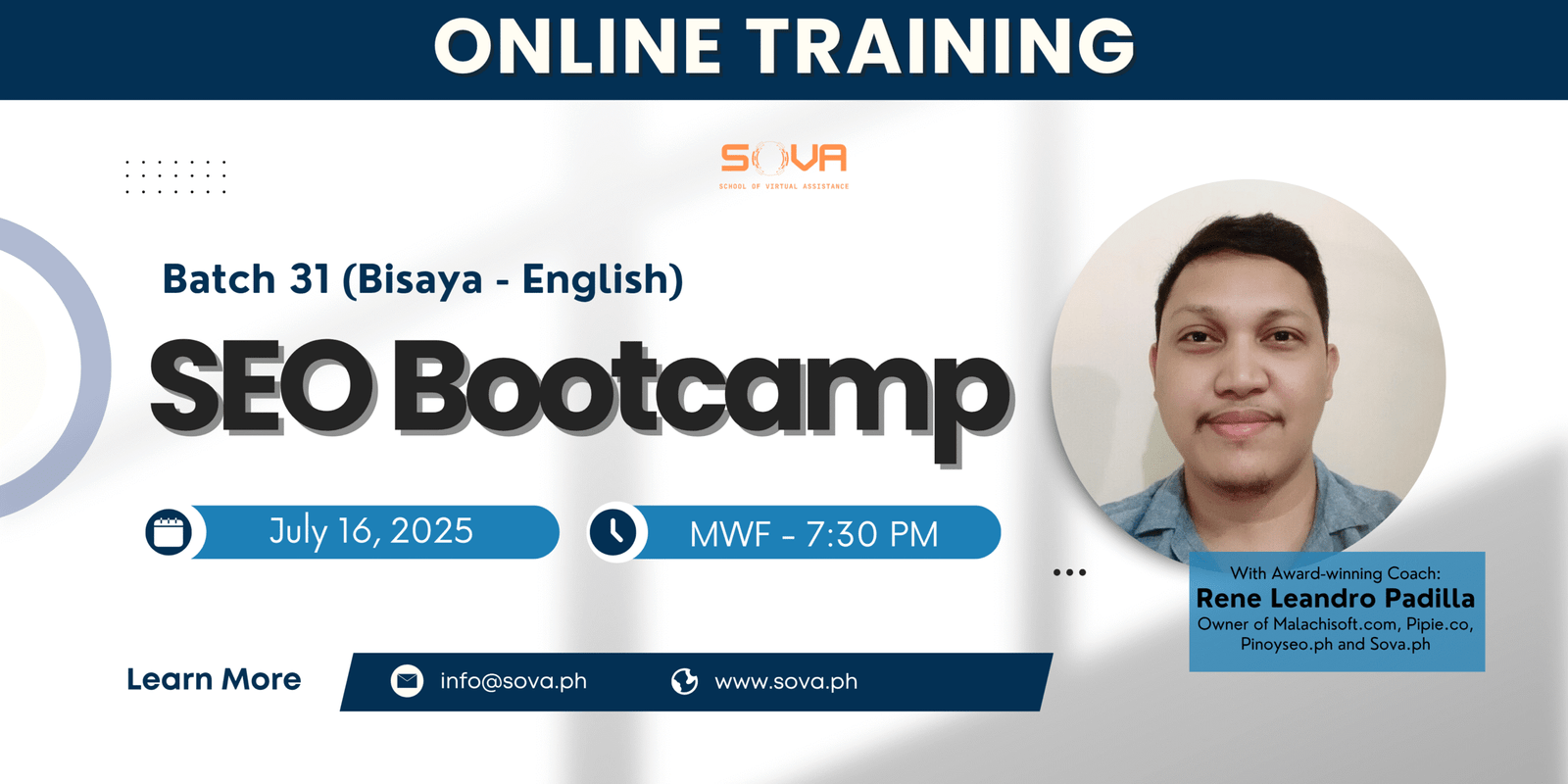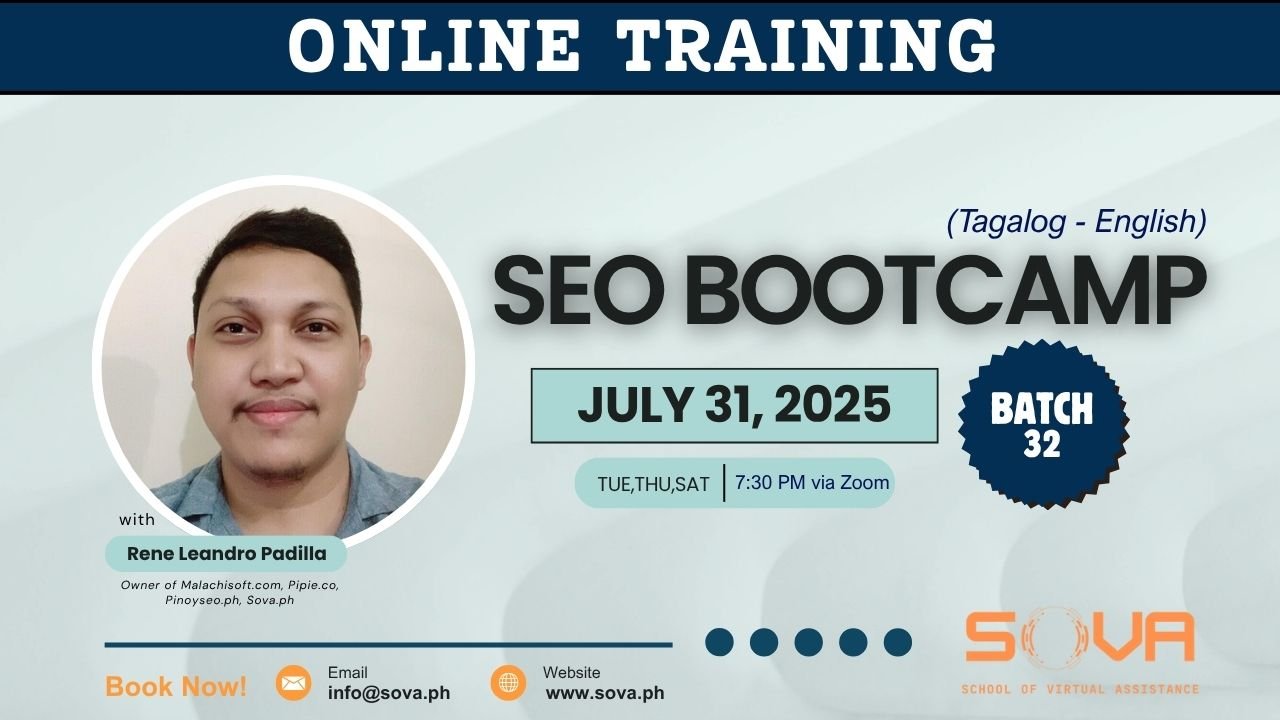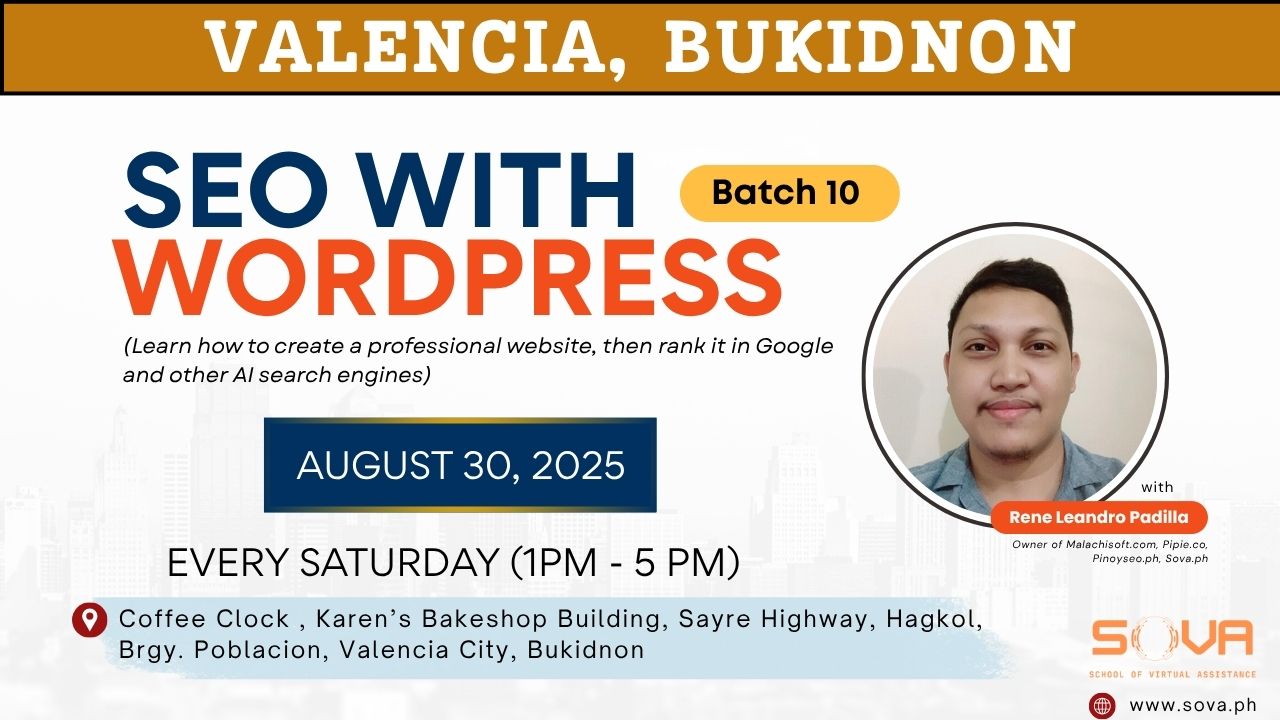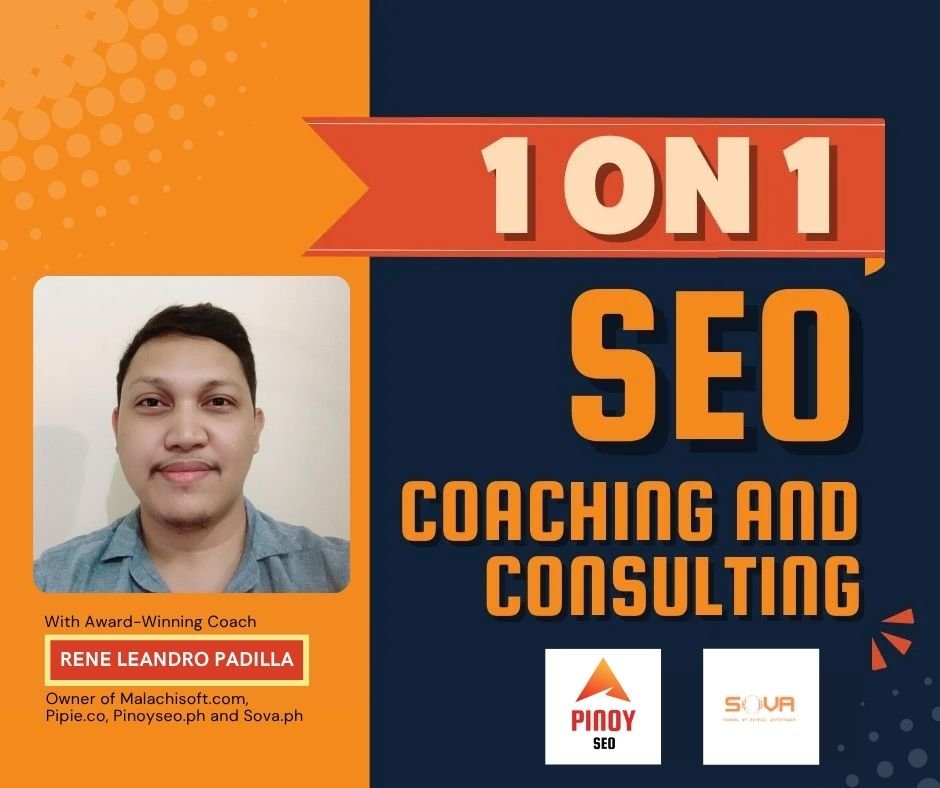Why SEO Is Important for Your Business
I. Introduction
A. Definition of SEO
SEO, or Search Engine Optimization, is a way to make a website more visible and easily found on search engines like Google. It involves using different strategies to improve various parts of a website, like the content, meta tags, and how the site is organized. The main goal of SEO is to bring in more visitors without having to pay for ads, by making sure the website shows up prominently when people search for related topics.
B. The significance of the online presence
In today’s fast-changing digital world, having a strong presence online is really important for businesses, no matter how big or small. It’s not just about being seen; it’s also about being trusted and easy to connect with. Your online presence is like a virtual shop window where people first meet your business. It helps with advertising and talking to customers, and it makes you more competitive in a crowded market. This blog will talk about why SEO is so important in creating a strong and lasting online presence.
C. Purpose of the blog
This blog is here to give you a clear understanding of Search Engine Optimization (SEO) and why it matters in today’s digital marketing world. We’ll explain what SEO is, and why it’s a big deal for businesses trying to do well online. Whether you’re just starting out or already have a business, this blog will help you get seen, trusted, and successful online using the power of SEO. It’s a helpful guide for anyone looking to make the most of their online presence.
II. Visibility and Credibility
A. The role of search engines
Search engines are like really smart helpers when we’re on the internet. They help us find what we want, like answers or information. Think of them as speedy readers who look through loads of web pages. They use special math-like rules to figure out which pages are the most useful for us. So, if you have a business or a website, it’s super important to know how search engines work. This way, you can make sure your stuff is set up so search engines can easily find it and suggest it to people who are searching.
B. Trust and authority
Imagine trust and authority as the strong base of a sturdy building when it comes to being seen and trusted online. Trust means people believe in you and what you offer. Authority is when others see you as a reliable source of information or products. Both of these are really important in the online world. To build trust and authority, you need top-quality content, a website that’s easy to use, and good connections with other reliable websites. When search engines see that people trust and depend on your site, they’re more likely to suggest it to others.
C. User behavior and trust
Understanding how people act online is a big part of gaining trust. Studies have found that when people look for something, they usually trust the normal search results more than ads. This means if your website shows up in the regular results, people are more likely to trust it. To earn and keep this trust, you need to make sure your content is what people are looking for. When they find what they need on your site, they’re more likely to stick around, interact with your content, and trust your website as a dependable source. All of this helps in building a strong and lasting online presence.
III. Increased Organic Traffic
A. Importance of organic traffic
Organic traffic is like the lifeblood of a website. These are the visitors who find you naturally, without any paid ads. Why is this so important? Well, organic traffic often comes from people genuinely interested in what you offer. They’re more likely to stick around, explore your site, and maybe even become customers. Plus, it’s free! When your website shows up high in search results, it’s a bit like having a prime spot in a busy market. People naturally come to you.
B. Paid vs. organic traffic
Imagine there are two roads to your website: one you pay for, like a toll road, and the other is free, like a public road. Paid traffic is when you pay to get visitors, like through ads. It can get you quick results, but it’s like renting space. Stop paying, and the traffic stops. Organic traffic, on the other hand, is like owning your own road. It takes time to build, but it lasts. Once you’re there, you can enjoy a steady flow of visitors without constantly spending money.
C. Long-term benefits
One great thing about organic traffic is how it keeps working in the long run. When you do SEO right, it keeps sending visitors to your website steadily. Once your site ranks high for the right words, it becomes a reliable source of organic traffic. This means you don’t have to rely so much on paid advertising. That saves you a lot of money and helps you make more from what you spend. Also, the trust and credibility that come from organic search results build a good image for your brand. This makes the long-term advantages of focusing on organic traffic in your digital marketing really strong
IV. Cost-Effective Marketing
A. Comparing SEO to other marketing strategies
When you want to tell people about your business, there are different ways to do it. One of the smartest and most budget-friendly methods is called Search Engine Optimization, or SEO for short. Unlike paid methods like PPC or sponsored social media posts, SEO doesn’t require constant payments for each visitor. This means you don’t have to spend money every time someone clicks or sees your page. Compared to things like paying for ads on social media or search engines, SEO is a more sustainable and affordable choice.
B. Long-term cost savings
Think of SEO as a smart, long-lasting investment. Some marketing strategies might give you quick results, but they don’t last very long. SEO, on the other hand, is about creating a strong and lasting presence on the internet. Once your website starts showing up higher in search results, it usually stays there as long as you keep working on it. This means you don’t have to keep using your budget to stay visible. Over time, the cost for each visitor through SEO goes down a lot compared to always paying for ads.
C. ROI potential
The return on investment (ROI) potential of SEO is remarkable. Leads generated through organic traffic often have a higher conversion rate compared to leads from paid sources. This means that the efforts and resources invested in SEO are more likely to result in meaningful conversions, such as purchases, sign-ups, or inquiries. So, as your website gets more popular in search results, the ROI from your initial SEO efforts continues to grow.
V. Targeted Audience
A. Understanding user intent
Have you ever searched for something online and found exactly what you were looking for? That’s because search engines try to understand what you want when you type in a search. This is called “user intent.” Understanding user intent is like being a good listener. It helps businesses know exactly what their audience is looking for. For example, if someone searches for “best running shoes,” they probably want recommendations, not a history lesson on shoes. By knowing user intent, businesses can create content that really hits the mark.
B. Tailoring content to meet audience needs
Think of this like going to a restaurant where they only serve your favorite foods. That’s a bit like what tailored content is for websites. It means making information and articles that are exactly what your audience is interested in. So, when people come to your site, they find precisely what they’re after. If you run a gardening website, for example, you’d want articles about planting tips, flower care, and maybe even a section about growing vegetables. This makes your website incredibly useful and valuable to your audience.
C. Local SEO for location-based businesses
If you have a business like a restaurant, a salon, or a shop that serves a local area, then local SEO is your best friend. It’s like putting up a big sign saying, “We’re here, and we’re awesome!” Local SEO helps your business show up when people nearby search for services or products you offer. It involves things like adding your business to local directories, getting reviews from happy customers, and making sure your address is super easy to find online. This way, when someone in your area looks for what you provide, they find you right away.
VI. Competitive Advantage
A. Competing in the digital landscape
In today’s digital world, standing out can feel like trying to be the tallest tree in a vast forest. The digital landscape is like a bustling marketplace where businesses of all sizes vie for attention. To succeed, you need more than just a presence; you need a competitive edge. This is where strategies like Search Engine Optimization (SEO) come into play. By optimizing your online presence, you’re essentially raising a flag that says, “Here we are, and here’s why we’re the best choice.” It’s about making sure your business shines brightly in the online crowd.
B. Staying ahead of the competition
But SEO isn’t just about catching up with the competition; it’s about surpassing them. By consistently refining and advancing your SEO strategy, you’re able to stay ahead in the ever-changing digital landscape. This means keeping up with algorithm updates, adopting the latest best practices, and regularly creating top-notch, relevant content. Staying ahead ensures that your business maintains a robust online presence, enabling you to capture a larger market share and establish yourself as a leader in your industry.
C. Case studies of successful SEO strategies
Sometimes, the best way to learn is by seeing what others have accomplished. Case studies are like success stories that reveal the secrets behind winning strategies. They showcase how businesses have used SEO to gain a competitive edge. These stories are like roadmaps, offering insights into what worked and why. By studying these case studies, you can uncover valuable tactics and apply them to your own digital journey. It’s like having a mentor who shares their playbook for success in the competitive digital arena.
VII. Mobile Optimization
A. The rise of mobile users
In recent years, the number of people using mobile devices to access the internet has skyrocketed. Smartphones and tablets have become an integral part of our daily lives, allowing us to browse, shop, and connect on the go. A big portion of web traffic now comes from phones and tablets. This shift in how people use the internet highlights how important it is to make sure your website is mobile-friendly. Businesses that don’t cater to mobile users could end up missing out on a significant number of potential customers. Recognizing this shift and adjusting your website accordingly isn’t just a savvy business move, it’s a crucial part of effective SEO.
B. Mobile-friendly websites and SEO
A mobile-friendly website is one that’s built and optimized to give users a great experience on different mobile devices, like smartphones and tablets. It’s not just about making the design adjust to different screen sizes, but also about ensuring the site loads quickly, is easy to navigate, and presents content in a way that’s easy to read on smaller screens. From an SEO perspective, search engines, particularly Google, favor mobile-friendly sites. Google gives priority to these sites in its rankings because it understands how important it is for users to have a seamless experience on mobile.
C. Google’s mobile-first indexing
Google’s adoption of mobile-first indexing is a major change in how search rankings work. This means that when Google evaluates and ranks websites, it primarily looks at the mobile version of the site, rather than the desktop version.Websites that aren’t mobile-friendly might see a drop in their rankings, which could lead to a decrease in organic traffic. Adapting to Google’s mobile-first indexing is vital for keeping your site visible in search results and ensuring your website stays competitive in the ever-changing digital landscape.
VIII. User Experience and Engagement
A. Importance of a well-designed website
Think of your website as your digital storefront. Just as a welcoming, organized physical store invites customers in, a well-designed website draws in online visitors. It’s about creating a space that’s easy to navigate, visually appealing, and provides a seamless experience. A well-designed website not only leaves a positive impression but also keeps visitors engaged, encouraging them to explore further and potentially convert into customers.
B. Reducing bounce rates
Imagine someone walking into a store, taking a quick look around, and then leaving without making a purchase. That’s similar to what happens when a visitor lands on your website and leaves almost immediately. This is known as a “bounce.” High bounce rates can signal that something isn’t quite right with your website. It could be slow loading times, confusing navigation, or irrelevant content. By identifying and addressing the issues that lead to high bounce rates, you can keep visitors around longer and increase the chances of conversions.
C. Increasing user interaction
User interaction is a key metric for gauging the effectiveness of a website. It involves actions such as clicking on links, filling out forms, leaving comments, and engaging with interactive elements. Increasing user interaction is a sign that visitors are actively engaging with your content, which can lead to longer time spent on the site and a higher likelihood of conversion.By integrating interactive features, such as quizzes, surveys, or live chat support, businesses can cultivate a deeper level of engagement and establish a more memorable user experience. This not only benefits user satisfaction but also contributes to improved SEO performance.
IX. Analytics and Data-Driven Decisions
A. Tracking SEO performance
Keeping an eye on how well your website is doing on search engines is a bit like having a map when you’re exploring a big area. It guides you and helps you make the right adjustments. This tracking involves looking at things like how many people naturally come to your site, how well your chosen keywords are doing, and how often people click on your site. When you look at this information, it’s like checking a report card for your website to see how visible and effective it is in reaching the right people.
B. Making informed marketing decisions
Making smart marketing choices is a like using information and insights to plan your strategies. By analyzing SEO metrics and performance data, businesses can make informed marketing decisions that lead to improved results. For example, if you identify that certain keywords are driving high-quality traffic and conversions, you can allocate more resources to optimize content around those keywords. Conversely, if you notice a high bounce rate on specific pages, you can investigate and make necessary improvements. Data-driven insights enable businesses to allocate resources more efficiently, fine-tune their strategies, and achieve better ROI.
C. Tools for SEO analysis
There is a wide array of tools and software available to assist in SEO analysis and tracking. These tools offer a range of functions, from keyword research and rank tracking to site audit and backlink analysis. Some well-known SEO tools include Google Analytics, Google Search Console, SEMrush, Moz, and Ahrefs, among others. They provide valuable data on website performance, keyword competitiveness, and user behavior. By leveraging these tools, businesses can conduct thorough SEO analysis, pinpoint opportunities, and make decisions based on data to enhance their online presence and search engine rankings.
X. Adaptation to Algorithm Updates
A. Google’s algorithm changes
B. Staying compliant with best practices
Doing SEO the right way is vital for having a strong online presence. This means using good strategies like choosing the right keywords, creating high-quality content, and managing links to your site. Following these rules helps your website show up well in search results. It’s also crucial to avoid using sneaky tactics, which can get your site in trouble and reduce its visibility. Keeping up with these best practices ensures that your website stays in good standing with search engines and continues to do well in searches.
C. Mitigating ranking fluctuations
Sometimes, you might notice that your website’s position in search results goes up and down. It’s a bit like a rollercoaster ride! These fluctuations can happen due to various reasons, including algorithm updates, when there’s more competition, or when you make changes to your own site. It’s important to understand that it’s normal, and there are strategies to handle it. This includes regularly creating good content, getting reputable websites to link to yours, and making sure visitors have a smooth experience on your site. By keeping an eye on your website’s performance and making adjustments when needed, you can help stabilize your rankings and make sure you’re still easily found by your audience
XI. Case Studies
A. Real-world examples of Businesses Benefiting from SEO
Let’s take a look at some real-life success stories where businesses have seen remarkable benefits from using SEO strategies:
Case Study: “Pipie Co“
Pipie Co, a cozy local cake shop, decided to expand its online presence. Through effective SEO practices, they optimized their website to show up in local search results. This led to a significant increase in foot traffic, and they quickly became a favorite spot in town.
B. Industry-Specific Success Stories
Each industry comes with its unique challenges and opportunities. Here are some inspiring success stories tailored to specific sectors:
Case Study: “Jossa Aesthetics and Medical Clinic“
Jossa Aesthetics and Medical Clinic faced stiff competition in the beauty clinic industry. They utilized SEO strategies catered to beauty and wellness, targeting keywords like skin care services” and “beauty clinic with cosmetic procedures.” Through content creation, local SEO, and user-friendly website design, they managed to secure top positions in relevant search results. This resulted in a significant boost in a surge of appointments and inquiries
These case studies demonstrate the power of tailored SEO strategies. By understanding the unique demands of their industries and leveraging the right SEO techniques, these businesses not only survived but thrived in their respective markets. They serve as a testament to the impact of effective SEO in achieving business goals.
XII. Conclusion
A. Recap of key points
In this detailed look at SEO, we’ve shown how crucial it is for businesses in today’s digital world. We started by explaining that SEO is all about making websites more visible on search engines. We explored key aspects like the importance of being present online, how search engines work, and how people behave online. We pointed out the advantages of getting more natural visitors, cost-effectiveness, connecting with specific audiences, and gaining a competitive edge through SEO. We also talked about the growing significance of mobile-friendly sites, providing a good user experience, and making decisions based on data. Lastly, we looked at adapting to changes in search algorithms and shared real-life examples to demonstrate how powerful SEO can be.
B. Encouragement for businesses to invest in SEO
The proof is clear: SEO isn’t just a marketing tactic; it’s a crucial strategy for businesses aiming for steady growth and triumph in the online world. By improving your online presence, you’re not only increasing visibility and trust but also tapping into a steady flow of free visitors. This leads to big savings in the long run and a high return on your investment. Additionally, by understanding and meeting what users are looking for, tailoring your content, and using local SEO to reach specific groups, you set your business up for success. Embracing mobile-friendly sites and making user experience a priority further strengthen your competitive advantage.
C. Final thoughts on the long-term impact of SEO
As we wrap up, it’s important to see the lasting impact of a well-planned SEO strategy. It’s not just about quick wins; it’s about building a strong online presence that lasts. By sticking to the best practices, adapting to changes in search algorithms, and keeping an eye on how well your site is doing, businesses can confidently navigate the ever-changing online world. The real-life success stories we’ve looked at prove how powerful SEO can be, no matter the industry or the size of the business. The question isn’t whether to invest in SEO, but rather, how soon your business can start reaping the rewards of this essential digital marketing strategy. The time to optimize is now.





